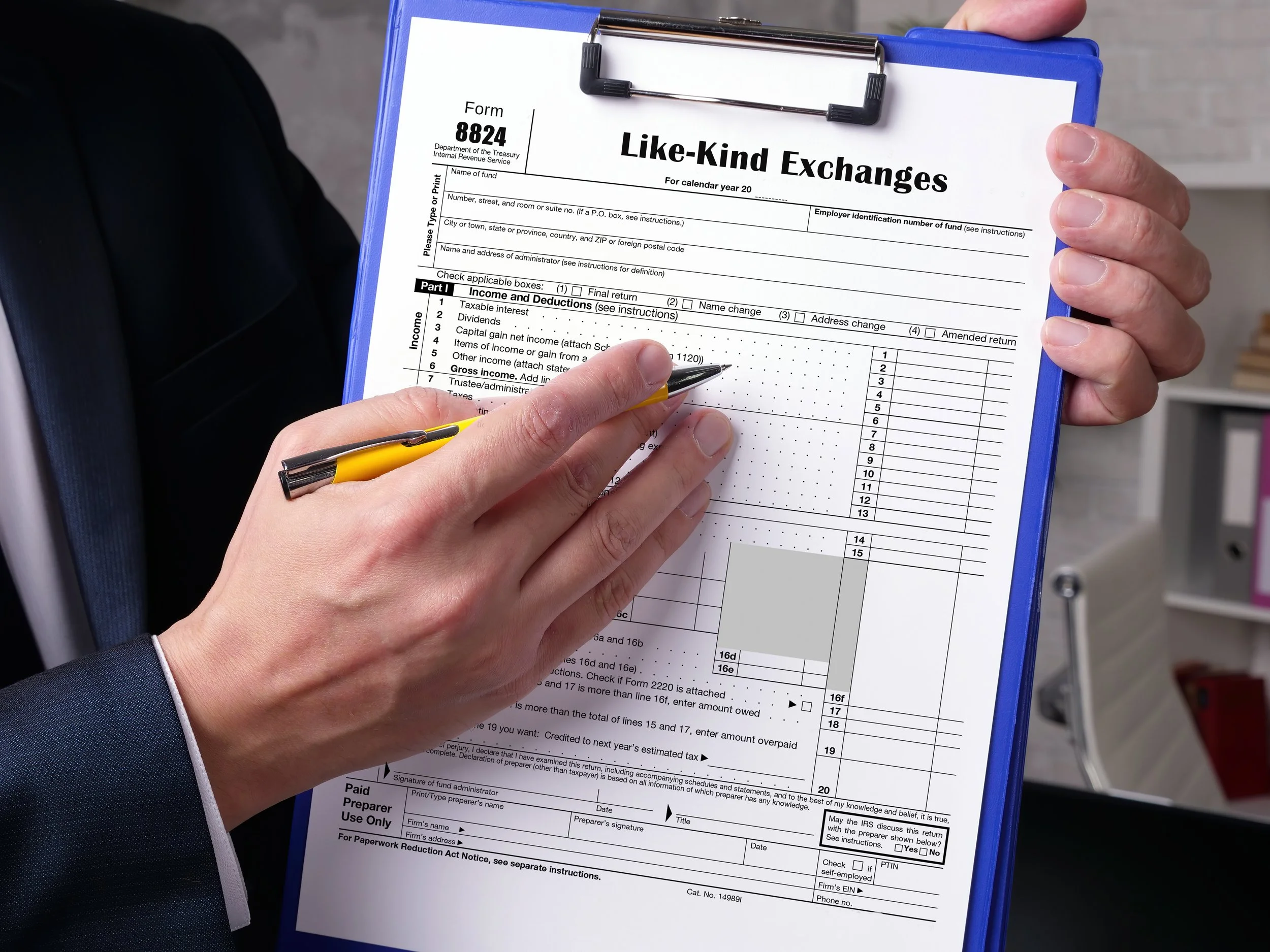1031 Exchange: A Real Estate Investor's Guide
The real estate industry uses numerous terminologies that can be perplexing, especially to rookies. Among these, 1031 exchange is one of the most common terms. If you've been in this line of business for quite some time, you may have already heard of it a couple of times as well. But as you may imagine, it's not one of those terms and jargon that everyone in the industry is required to know, such as amortization, depreciation, and closing costs.
Hence, while it is common, it's not to the point that all real estate professionals understand its meaning. But that changes if you want to step foot into the world of real estate investing.
Speaking of which, if you plan to do a 1031 exchange, you might be interested in checking out some helpful sources, such as https://www.peregrineprivatecapital.com/1031-exchange-facilitators-portland-oregon/.
An Overview Of 1031 Exchange
In real estate, a 1031 exchange is a transaction where you replace one investment property with another within a specified period to avoid depreciation recapture and capital gains.
If you've been an investor for a long time, you should know what these two terms mean. But for those who aren’t familiar with them, here's a look at their respective definitions:
Depreciation Recapture
When an investor or homeowner sells a property for a price exceeding its original cost, the Internal Revenue Service (IRS) takes the depreciated value as taxable income or gain. Experts call this depreciation recapture.
Suppose you bought a USD$100,000 property four years ago. If, say, it depreciated to USD$80,000, the depreciated value would be the difference between the two, which is USD$20,000. This portion would then become taxable, further increasing your overall capital gains tax, which is obviously not a good outcome for investors.
Capital Gains
Capital gains refer to the difference between buying and selling prices. For example, in the previous example, if the USD$100,000 property has not yet depreciated, and you sell it for USD$150,000, the capital gains would be USD$50,000. Much like the recaptured depreciation discussed earlier, capital gains are taxable.
As you can see, selling an investment incurs a considerably large amount of tax. That’s precisely why investors should, or rather, must know that the concept of 1031 exchange exists, as it allows them to save money by deferring taxes on depreciation and capital gains. Plus, it allows you to make more money from your investments, so there’s no reason to pass on this opportunity.
The name 1031 exchange originates from Section 1031 of the US Internal Revenue Code (IRC), stating that any profit you make from selling an investment property will incur taxes.
But if the seller invests the income from the transaction in new investment property of equal or greater value, the investor can circumvent capital gains taxes. However, there are several requirements before you can do a 1031 exchange.
Requirements Of A 1031 Exchange
If you look closely at the previous section, you'll notice several conditions that you must fulfill to do a 1031 exchange successfully. But for time's sake, here's a summary of these requirements:
Property value: As stated earlier, to do a 1031 exchange, you must invest in a property of equal or greater value than the relinquished property.
Property type: The sold and replacement property must belong to the same category, meaning you can only exchange residential rental properties with properties of the same kind. You can't swap them with other types of investment properties, such as industrial or commercial properties.
Use of income: You must also use all the income you gain from selling the relinquished property to purchase the replacement property.
Time: You must complete the transaction within a specified period. Once this deadline passes, you essentially lose the right to do a 1031 exchange.
If you can fulfill these requirements, it should be possible to successfully perform a 1031 exchange and save money by steering away from capital gains taxes and depreciation recapture.
But before you can do so, you must first decide on the type of 1031 exchange.
Types Of 1031 Exchanges
The Internal Revenue Service (IRS) allows investors and real estate professionals to engage in four types of 1031 exchanges. Here's a guide to each type and what it entails:
Simultaneous Exchange
A simultaneous exchange is when an investor sells their property and uses the income to purchase a new investment property at the same time, hence, the name.
If you want to enjoy the advantages of a 1031 exchange, it would be best to stick with this type of exchange since any delay can potentially jeopardize the transaction.
Delayed Exchange
A delayed exchange is the exact opposite of a simultaneous exchange. In this type, you transfer the ownership of your property first before purchasing the new property.
Delayed exchange involves an intermediary who will collect the proceeds from the sale and buy the replacement property on your behalf. They will then transfer ownership of that property to you, the exchanger. You must complete the entire transaction within 180 days of the original property's sale. Otherwise, the exchange will fail, and you'll miss its advantages.
Reverse Exchange
As the name implies, a reverse exchange is when you purchase the replacement property first and sell the original property second. The mechanics are identical to that of delayed exchanges in that you have a deadline of 180 days.
Construction Exchange
Investors can also exchange investment properties, such as buildings, for underdeveloped or vacant land. In this case, they'll need to sell the original property, give the proceeds to an intermediary, and have that intermediary pay for the improvement or construction of the purchased land. Apart from this difference, it follows the same rules as the other types of exchanges.
Since each type has its advantages, investors, such as yourself, must put a lot of thought into this decision. With the selection complete, you can begin the transaction, starting from the sale of the original property up to the purchase of the replacement property.
1031 Exchange: Step-By-Step Process
Doing a 1031 exchange is far more complex than just buying and selling real estate properties. In that regard, here are five steps involved in the transaction.
1. Select an intermediary
Before anything else, you must first select a qualified intermediary. This individual will act as a trustee who will handle various transactions in the exchange. For example, they will hold the money from the sale of your relinquished property. The intermediary will then disburse these funds to the investor (you) once you decide to buy the new property.
2. Relinquish your original property
With an intermediary available, you can now proceed with the actual transaction. The first step in this process is selling or relinquishing your original property.
Once you do so, the timeline for the 1031 exchange begins.
3. Find a replacement property
Within 45 days of selling the original property, you must find a replacement property you will purchase using the proceeds from the original property's sale.
This step is what investors call the identification of replacement property, and there are specific rules for this step. You'll get to know more as you continue reading this guide.
4.Purchase the replacement property
Within 180 days of selling the original property, you must complete the purchase of the new property. The intermediary typically handles this step but may need your input.
5. Notify your tax advisor
There are cases where even after the completion of a 1031 exchange, investors weren't able to enjoy its tax advantages, mainly because they didn't document the transaction.
Therefore, after buying and selling the properties, you, the investor, should notify your tax advisor of the exchange to ensure they can properly document the transaction.
Note that this only applies to delayed, reverse, and construction/improvement exchanges, not to simultaneous exchanges. Identification is perhaps the most intricate one among these steps, especially since there are several rules when identifying a replacement.
1031 Exchange Identification Rules
When you do a 1031 exchange, you must ensure that the original and replacement properties are of equal or greater value. The properties should also be like-kind. These statements can be confusing to real estate investors, especially to rookies, considering how vague it sounds. For that reason, experts have developed rules that can serve as your guidelines:
1. Three-Property Rule
The first rule states that you can identify up to three properties as long as all of these combined have an equal or greater value than the relinquished property.
2. 200% Rule
If you identify more than three properties, you must ensure that the total value of all the properties doesn't exceed 200% of the relinquished property's value. It's particularly useful for investors who want to split the proceeds into smaller investments.
For example, if you sold the relinquished property at a value of USD$500,000, you can identify 10 replacement properties with a combined value of up to USD$1,000,000.
3. 95% Rule
The 95% rule states that investors can identify an unlimited number of properties with a value exceeding 200% of the relinquished property.
However, the investor must acquire at least 95% of the value identified.
Suppose the relinquished property has a value of USD$500,000. In that case, you can identify 10 replacement properties with a combined value of USD$2,000,000, which easily exceeds 200% of the original property's value. But to qualify for the exchange, you must ensure that you acquire 95% of that value (USD$1,900,000).
If, after buying the 10 replacement properties, you spent only USD$1,800,000, you won't be enjoying the tax advantages from the 1031 exchange.
The three-property rule is easy to fulfill, but it restricts your options when finding replacement properties. The 200% rule is a bit more challenging to accomplish, but it minimizes the restrictions considerably. The 95% rule allows you to identify any replacement property, but it isn't easy to pull off due to its condition. Either way, with this, you should now know everything you need to know to execute a 1031 exchange on your investment properties.
Final Words
If you plan on investing in real estate properties from now on, you should first equip yourself with all the knowledge you can get. After all, successful investors didn't gain success immediately. They crawled their way up using their experience, skills, and, most importantly, knowledge. In that regard, every real estate investor must understand the 1031 exchange, especially since it can become a powerful tool that can help you maximize your profits in the long run.








